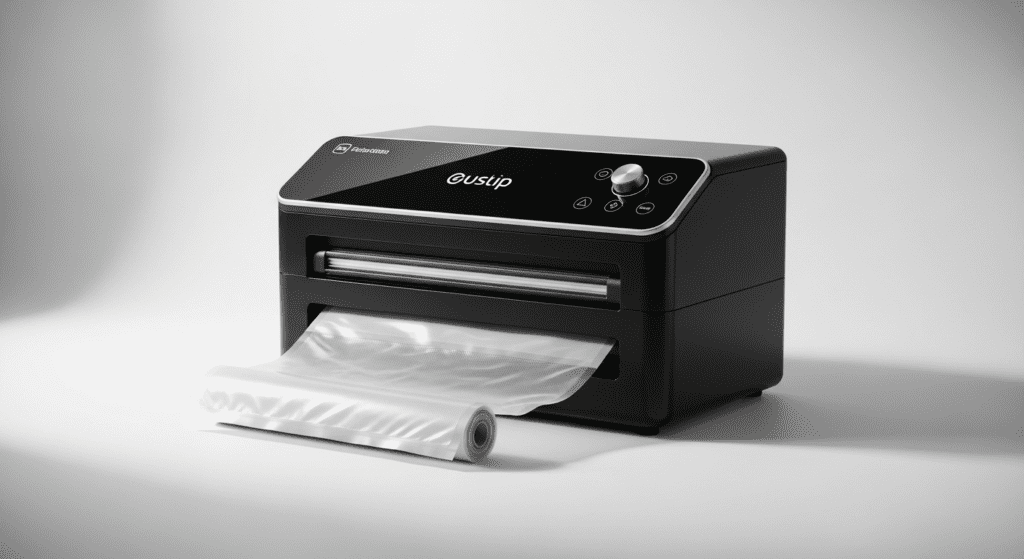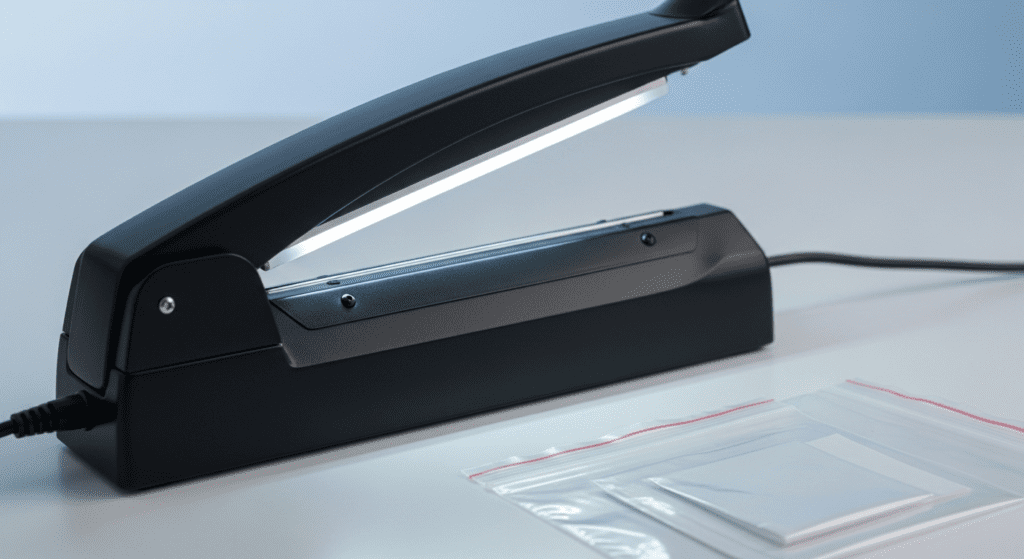A vacuum sealer removes air from bags before sealing them, while an impulse sealer simply seals bags without removing any air. Both machines create airtight seals, but they work in completely different ways and serve different purposes.
What Is Vacuum Sealer
A vacuum sealer is a machine that sucks all the air out of a plastic bag before sealing it shut. The machine uses a vacuum pump to remove air, then applies heat to create an airtight seal.
Most vacuum sealers work with special textured bags that have tiny channels inside them. These channels help the machine pull air from every corner of the bag.

What Is Impulse Sealer
An impulse sealer is a simple machine that uses a quick burst of heat to seal plastic bags. It doesn’t remove any air – it just creates a strong seal across the opening of the bag.
The machine works by sending an electrical impulse through a heating wire. This wire heats up instantly, melts the plastic layers together, then cools down just as quickly. The whole process takes only 2 to 3 seconds.

The Difference Between Vacuum Sealer and Impulse Sealer
Now that you understand what each machine does, let’s explore their specific differences. Each type has unique features that make it better for certain tasks.
Working Principle
Vacuum sealers use a two-step process: first removing air, then sealing. The vacuum pump creates negative pressure inside the bag, pulling out all the air molecules. Once the air is gone, a heating bar melts the bag edges together.
Impulse sealers skip the air removal entirely. They only focus on creating a seal. When you press down the sealing bar, electricity flows through a nichrome wire for a fraction of a second. This creates enough heat to fuse the plastic layers.
Air Removal
Vacuum sealers can remove up to 99.9% of air from a bag. This creates an almost perfect vacuum environment inside.
Impulse sealers don’t remove any air at all. If you seal a bag of chips with an impulse sealer, all the air stays inside. The bag will still be puffy, just like when you bought it from the store.
Compatible Materials
Vacuum sealers need special bags with textured surfaces. These bags typically cost $0.10 to $0.50 each. The texture is essential because smooth bags would collapse completely during vacuuming, preventing air removal.
Impulse sealers work with almost any heat-sealable plastic. You can use plain polyethylene bags that cost as little as $0.01 each. They also seal cellophane, shrink wrap, and even some foil-lined bags.
Speed
Impulse sealers are much faster for sealing individual bags. Each seal takes only 2 to 3 seconds. You can seal 20 to 30 bags per minute if you work quickly.
Vacuum sealers take longer because they must remove air first. A typical cycle takes 15 to 40 seconds. This means you can only seal about 2 to 4 bags per minute.
Maintenance
Impulse sealers need very little maintenance. You might need to replace the heating wire every few months if you use it heavily. The Teflon tape on the sealing bar lasts even longer.
Vacuum sealers require more care. The vacuum pump needs regular oil changes (every 3 to 6 months). The sealing gaskets can wear out and need replacement. Chamber models also need their vacuum oil checked weekly.
Typical Uses
Vacuum sealers excel at food preservation. By removing air, they prevent freezer burn and extend shelf life by 3 to 5 times. People use them for sous vide cooking, marinating meats quickly, and storing valuable documents.
Impulse sealers are perfect for packaging items that don’t need air removal. Think of sealing candy bags, packaging craft supplies, or closing sample packets. Many businesses use them for shipping small parts or creating product samples.
Cost Range
Basic home vacuum sealers start around $30 to $50. Good quality external models cost $100 to $300. Chamber vacuum sealers for commercial use range from $1,000 to $10,000.
Impulse sealers are generally cheaper. Small handheld models cost $15 to $30. Tabletop versions with 12-inch sealing bars cost $50 to $150. Industrial models with 24-inch or longer bars range from $200 to $1,000.

